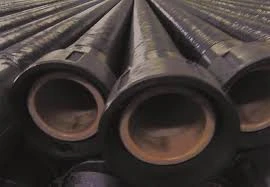
-
 Afrikaans
Afrikaans -
 Albanian
Albanian -
 Amharic
Amharic -
 Arabic
Arabic -
 Armenian
Armenian -
 Azerbaijani
Azerbaijani -
 Basque
Basque -
 Belarusian
Belarusian -
 Bengali
Bengali -
 Bosnian
Bosnian -
 Bulgarian
Bulgarian -
 Catalan
Catalan -
 Cebuano
Cebuano -
 China
China -
 China (Taiwan)
China (Taiwan) -
 Corsican
Corsican -
 Croatian
Croatian -
 Czech
Czech -
 Danish
Danish -
 Dutch
Dutch -
 English
English -
 Esperanto
Esperanto -
 Estonian
Estonian -
 Finnish
Finnish -
 French
French -
 Frisian
Frisian -
 Galician
Galician -
 Georgian
Georgian -
 German
German -
 Greek
Greek -
 Gujarati
Gujarati -
 Haitian Creole
Haitian Creole -
 hausa
hausa -
 hawaiian
hawaiian -
 Hebrew
Hebrew -
 Hindi
Hindi -
 Miao
Miao -
 Hungarian
Hungarian -
 Icelandic
Icelandic -
 igbo
igbo -
 Indonesian
Indonesian -
 irish
irish -
 Italian
Italian -
 Japanese
Japanese -
 Javanese
Javanese -
 Kannada
Kannada -
 kazakh
kazakh -
 Khmer
Khmer -
 Rwandese
Rwandese -
 Korean
Korean -
 Kurdish
Kurdish -
 Kyrgyz
Kyrgyz -
 Lao
Lao -
 Latin
Latin -
 Latvian
Latvian -
 Lithuanian
Lithuanian -
 Luxembourgish
Luxembourgish -
 Macedonian
Macedonian -
 Malgashi
Malgashi -
 Malay
Malay -
 Malayalam
Malayalam -
 Maltese
Maltese -
 Maori
Maori -
 Marathi
Marathi -
 Mongolian
Mongolian -
 Myanmar
Myanmar -
 Nepali
Nepali -
 Norwegian
Norwegian -
 Norwegian
Norwegian -
 Occitan
Occitan -
 Pashto
Pashto -
 Persian
Persian -
 Polish
Polish -
 Portuguese
Portuguese -
 Punjabi
Punjabi -
 Romanian
Romanian -
 Russian
Russian -
 Samoan
Samoan -
 Scottish Gaelic
Scottish Gaelic -
 Serbian
Serbian -
 Sesotho
Sesotho -
 Shona
Shona -
 Sindhi
Sindhi -
 Sinhala
Sinhala -
 Slovak
Slovak -
 Slovenian
Slovenian -
 Somali
Somali -
 Spanish
Spanish -
 Sundanese
Sundanese -
 Swahili
Swahili -
 Swedish
Swedish -
 Tagalog
Tagalog -
 Tajik
Tajik -
 Tamil
Tamil -
 Tatar
Tatar -
 Telugu
Telugu -
 Thai
Thai -
 Turkish
Turkish -
 Turkmen
Turkmen -
 Ukrainian
Ukrainian -
 Urdu
Urdu -
 Uighur
Uighur -
 Uzbek
Uzbek -
 Vietnamese
Vietnamese -
 Welsh
Welsh -
 Bantu
Bantu -
 Yiddish
Yiddish -
 Yoruba
Yoruba -
 Zulu
Zulu
frp fittings
Understanding FRP Fittings Advantages and Applications
Fiber Reinforced Plastic (FRP) fittings have gained prominence in various industries due to their remarkable properties and versatility. Composed of a polymer matrix reinforced by fibers, these fittings are known for their high strength-to-weight ratio, corrosion resistance, and longevity. This article explores the significance of FRP fittings, their advantages, and a few applications.
Advantages of FRP Fittings
1. Corrosion Resistance One of the most significant benefits of FRP fittings is their resistance to corrosion. Unlike traditional materials like steel or iron, FRP does not rust or degrade when exposed to harsh chemicals, moisture, or extreme environmental conditions. This characteristic makes FRP fittings ideal for industries such as wastewater treatment, chemical processing, and marine applications, where exposure to corrosive substances is common.
2. Lightweight FRP fittings are substantially lighter than metal fittings. This property facilitates easier handling, transportation, and installation. The reduced weight also means that less structural support is needed in applications, resulting in cost savings on installation and materials.
3. High Strength and Durability FRP fittings exhibit superior tensile strength, making them suitable for high-stress environments. They can endure significant mechanical loads and impacts without failure, ensuring long service life with minimal maintenance. This durability translates to lower lifecycle costs for businesses, as the need for frequent replacements is diminished.
frp fittings

4. Design Flexibility FRP fittings can be molded into various shapes and sizes, allowing for customized solutions tailored to specific application requirements. This flexibility in design enables engineers and architects to innovate without the constraints typical of traditional materials.
5. Thermal Insulation Having low thermal conductivity, FRP fittings can help in maintaining temperature control in systems where heat retention or dissipation is critical. This property is particularly beneficial in industries like pharmaceuticals and food processing, where strict temperature regulations must be adhered to.
Applications of FRP Fittings
FRP fittings find utility across a broad spectrum of industries. In the chemical processing sector, they are used for piping systems that transport corrosive materials. In construction, FRP fittings serve in structures exposed to harsh environments, like bridges and marine facilities. The oil and gas industry employs FRP for offshore platforms, where weight savings are crucial. Additionally, in the environmental sector, FRP fittings are used for tanks and other equipment in wastewater treatment plants.
In conclusion, FRP fittings present a compelling alternative to traditional fitting materials. Their unique combination of corrosion resistance, lightweight nature, high strength, flexibility, and thermal insulation makes them suitable for diverse applications across many industries. As technology advances, the use of FRP fittings is expected to grow, contributing to more sustainable and efficient industrial practices.
Latest news
-
Exploring the Benefits of Top Hammer Drifter Rods for Enhanced Drilling PerformanceNewsJun.10,2025
-
High-Precision Fiberglass Winding Machine for GRP/FRP Pipe Production – Reliable & Efficient SolutionsNewsJun.10,2025
-
FRP Pipes & Fittings for Shipbuilding - Corrosion-Resistant & LightweightNewsJun.09,2025
-
Premium FRP Flooring Solutions Durable & Slip-ResistantNewsJun.09,2025
-
Premium Fiberglass Rectangular Tanks Durable & Lightweight SolutionNewsJun.09,2025
-
Tapered Drill String Design Guide Durable Performance & UsesNewsJun.09,2025









